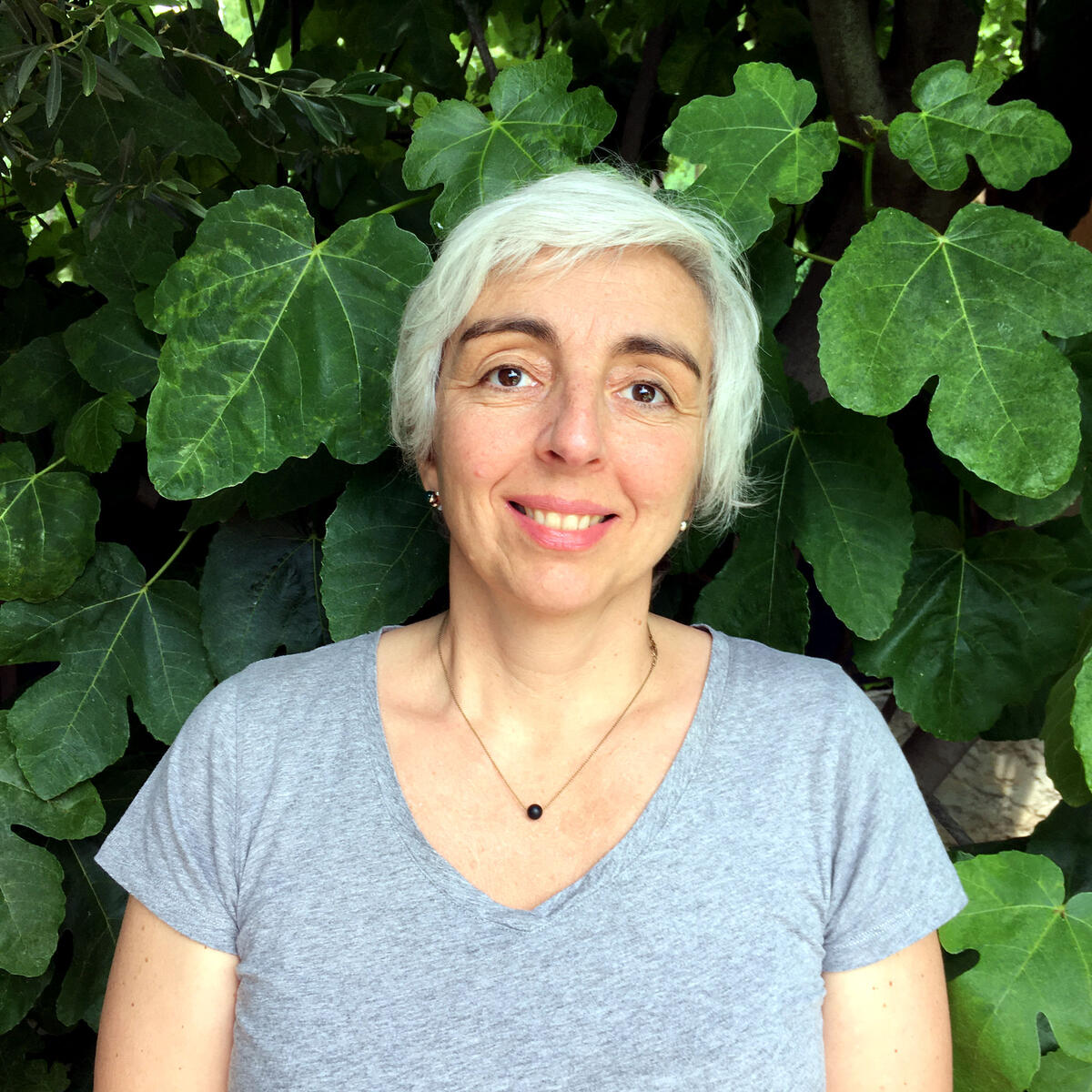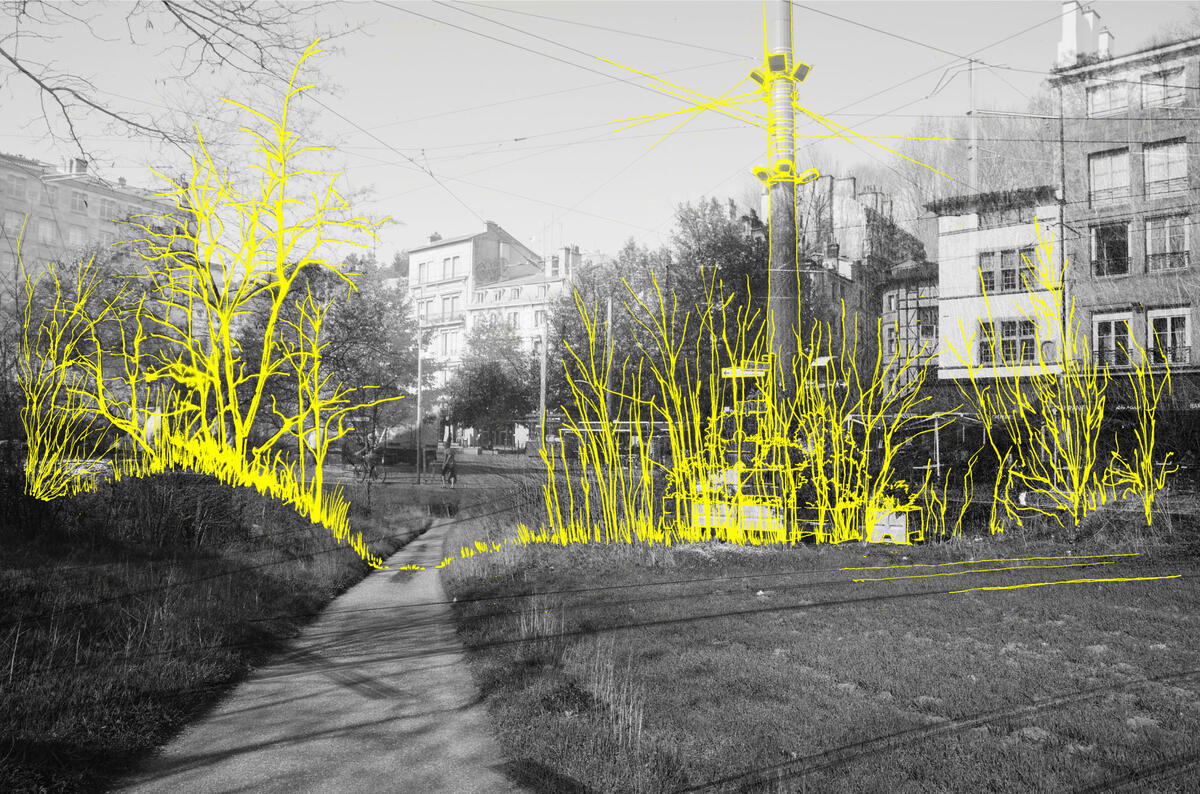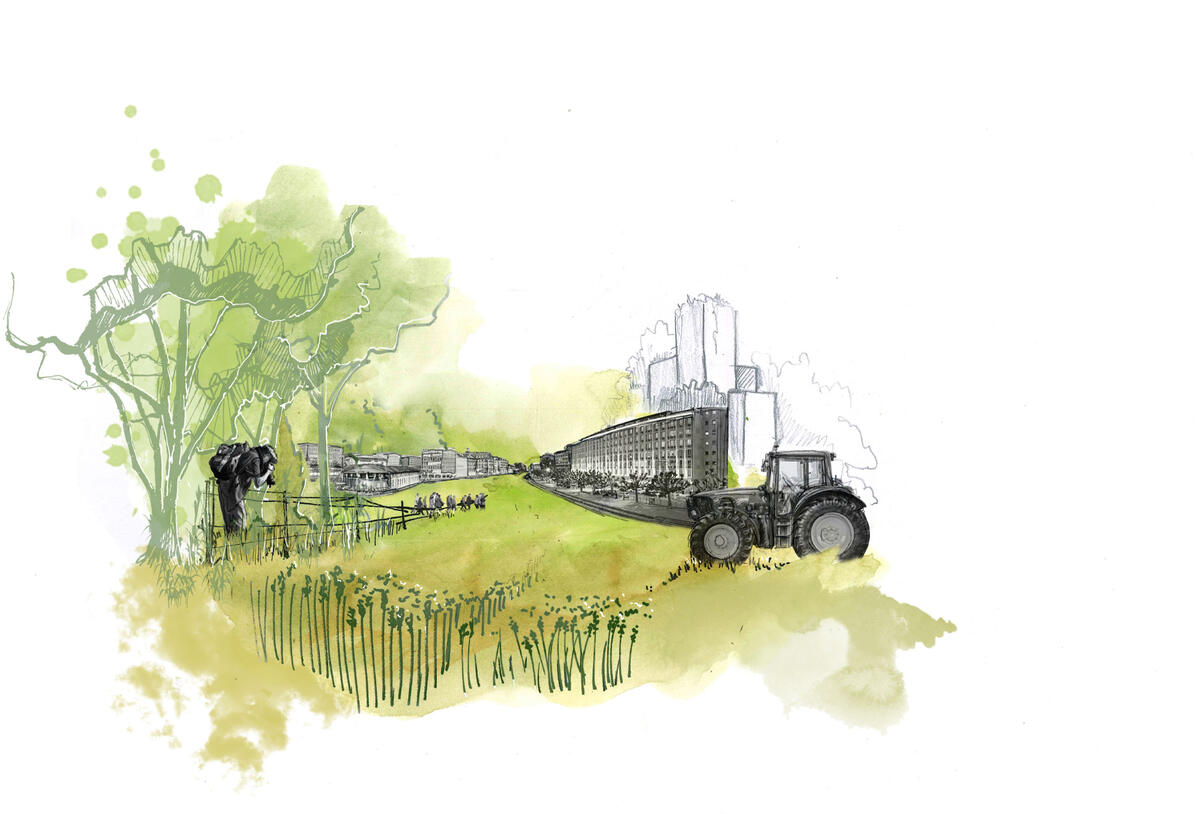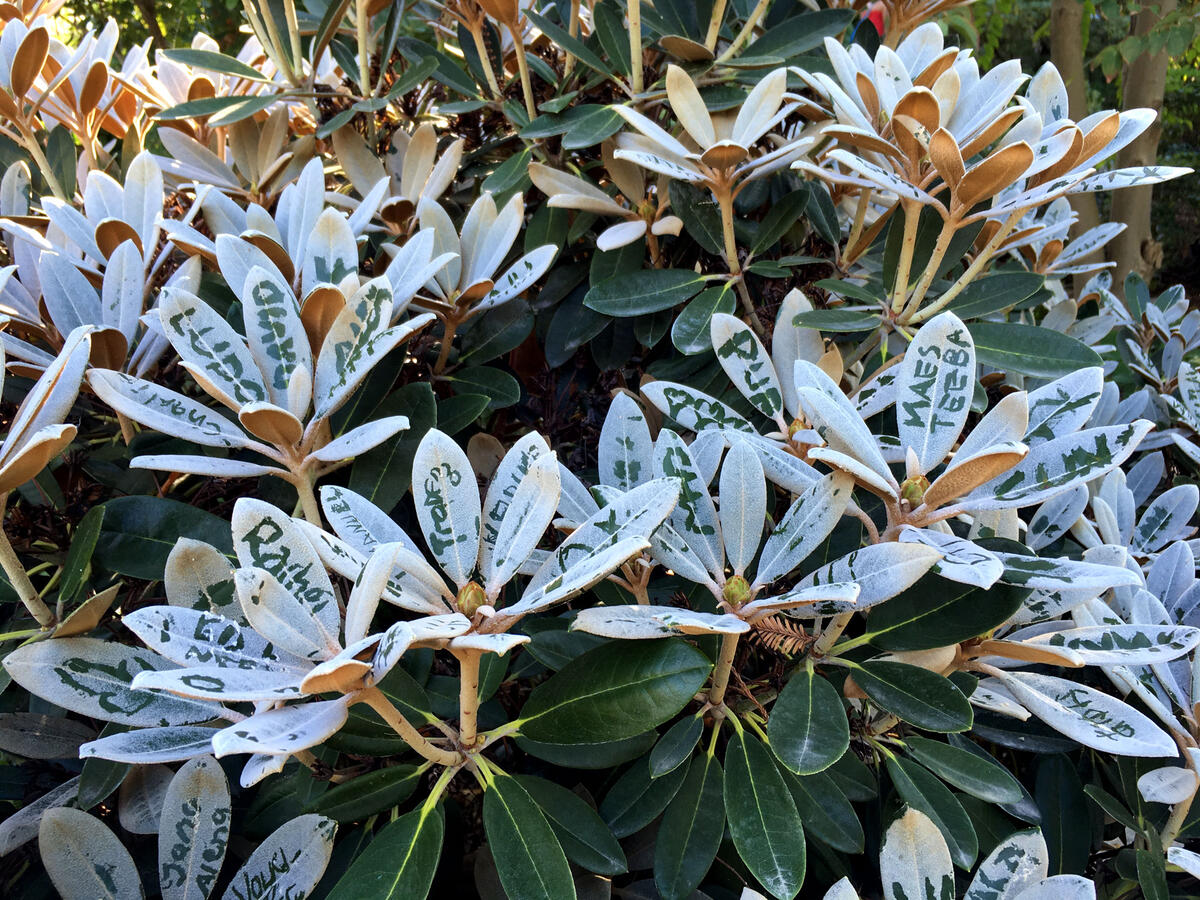When our living spaces become essential
12. Juni 2020, Anne-Outram Mott and Monique KellerAn interview with Natacha Guillaumont

Natacha Guillaumont
In keeping with its commitment to forward-thinking and its focus on sustainability and decentralisation, NEXPO is exploring 21st-century community life in Switzerland as a whole. The quality of our living spaces was recently put to the test by the implementation of a partial lockdown to fight the coronavirus pandemic and has become increasingly topical due to the climate crisis and the growing urbanisation of Swiss regions. It is also set to be one of the key topics tackled by the new national exhibition.
In our interview with Natacha Guillaumont, Head of Landscape Architecture at HEPIA Geneva and a partner of the NEXPO pilot project "Urban Nature”, we asked her what the COVID-19 crisis teaches us, what she would like to share with the younger generations and what an emblematic space for community life in the future might look like.
Your teaching during this spring’s partial lockdown involved distance learning with students who weren’t able to get out and explore the terrain. Given that immersing yourself in landscapes is particularly important to you, how did you handle the lockdown?
Like a lot of people, I think! Being confined indoors and working from home felt like a significant restriction to my freedom – a very unsettling experience. But my job makes it easy for me project myself into other imagined locations; it gives me a memory for spaces that allows me to invite landscapes into my mind’s eye.
My students are developing this ability, but the current situation is damaging it. What revives and reinvigorates it is being able to get out onto the terrain, to observe and confront, to feel, to listen and to be in touch with the people who are talking about it. We’re experiencing a kind of withdrawal from all these practices that constitute our field.
How would you define the practice of “landscaping”?
There are numerous definitions of the concept of “landscape”, which also vary across different languages. I think the European Landscape Convention describes it very well: “an area, as perceived by people, whose character is the result of the action and interaction of natural and/or human factors”. It’s a definition we can all agree on because it makes it clear that landscape is perceived in cultural and all-encompassing terms.
From that perspective, I was probably already a landscape architect before I formally became one because I’ve never tried to compartmentalise or dissociate the objects that make up a space. It isn’t the case that you have architectural or constructed features on the one side and plant life, the sky and the ground on the other. Working with landscapes is about considering the space we occupy as a whole – whatever that space might be.
«The city is inevitably a part of the landscape: it both creates landscape and is landscape.» Natacha Guillaumont
Do you want to stay in touch?
Subscribe to our newsletterNonetheless, Swiss landscapes are more often associated with lakes and mountains than with cities.
City dwellers have access to just as many landscapes as people who live in alpine valleys or in Inuit communities! Although I understand the symbolic power of certain landscapes, restricting the concept of landscape to the countryside doesn’t make sense to a landscape architect. The city is inevitably a part of the landscape: it both creates landscape and is landscape.
Historically speaking, the concept of landscape doesn’t relate to the presence of natural features but to the mental picture we create with them. It’s an issue that always requires untangling when you’re working with people in other fields – for example, with urban planners, environmentalists or spatial designers. Consigning landscapes to areas beyond the city would be fatal to the quality of urban environments.
Do you think crises like COVID-19 change the relationship between the city and the countryside?
It’s still too soon to tell, but what is certain is that the COVID-19 crisis is demonstrating and accentuating what we already knew: we attach value to the places we live in. When our movements are restricted, those places take on a colossal importance; their qualities become essential, and the question of how they are shared is equally central. But there are significant disparities at play here: a well-planned living space can adapt more easily in difficult times.
A good example of this is the use of passageways in housing cooperatives to encourage sharing – it’s wonderfully inventive. What the COVID-19 crisis teaches us is that you should never stop building or rethinking shared spaces because the expectations of them, the way they are used and the balance that needs to be achieved are always evolving. So the concept of sharing has to be constantly reinvented.
At the same time, I think it’s important to remember that you can’t expect a place to do everything. There are relationships at the heart of all life – whether it is human, vegetable or animal – whose balance must be respected. This is true of urban spaces like parks, lakeshores and riversides, and of the forests that are subject to damaging overcrowding from visitors who now depend on them for a breath of fresh air! It’s possible to plan ahead here.
«The best way to learn about this is to go out into the field and see what connects living things to a particular space.» Natacha Guillaumont

© HEPIA, Geneva
Is it this idea of balance that you try to share with the new generations of landscape architects you train?
Absolutely, it’s essential to understand the whole array of relationships at work in a particular location. There are a number of ways to understand space, but what seems vital to me is comprehending not only the built elements and circulation but also the living systems such as water, soil, vegetation and, of course, humans and animals.
The best way to learn about this is to go out into the field and see what connects living things to a particular space. Incidentally, a great deal of the plant world remains unexplored – landscape architecture is a young discipline with an extremely rich and stimulating future ahead of it!
How do you preserve this sense of curiosity about the terrain in a world so focused on digital progress?
Although landscape students are undeniably interested in exploring the terrain, there has admittedly been a considerable increase in the influence of the digital in our work. It does bring a number of benefits, as long as it’s seen as a means to an end, rather than an end in itself. If you opt for an exclusively virtual approach, you lose the sense of place and the ability to function as a kind of sensory membrane to the real world.
I like to remind students to trust their intuition and stay inventive because the whole point of the organic is that it is a dynamic process. You therefore need to constantly adapt and stay attentive to change. The increasing resonance of the fight against climate is an excellent example of this and has been of interest to landscape architects for several decades now.
NEXPO’s pilot project “Urban Nature”, of which HEPIA is a partner, aims to design the city of tomorrow based on the landscape. What’s the thinking behind this?
The idea is to reverse the existing paradigm and plan the development of the site based on the qualities of the landscape. Cities are primarily developed along functional criteria, which has created some very specialised spaces, such as transport infrastructure. Although there isn’t a lot of margin for it nowadays, we can invert these prerequisites if we prioritise qualities such as water, the preservation of areas of open ground or even the visibility at a particular site.
To take an example from history, when Le Nôtre designed the districts of Versailles, he did so based on the woods and vegetation he had created for the Château’s park. The blueprint for a garden had thus created a city. Closer to home, in Geneva, the connective green spaces created by Maurice Braillard’s regional master plan are a fine example of how such spaces can be used to link districts in the city centre to the countryside beyond it. This creates a series of biological continuums that connect the city to a network of woods, agricultural land and promenades, often along watercourses.
«Whether the heritage in question is natural or built, we must stay alert to the principle of dynamism – that is, recognising and maintaining but also reinventing if necessary.» Natacha Guillaumont

© HEPIA Geneva
Are we getting closer to the idea of a “resilient city” when we start thinking more about its landscape features?
“Resilience” is a fashionable term that I prefer to reserve for human psychology. The way I understand it, it doesn’t seem suited to the reality of Swiss cities, particularly because it carries within it the idea of trauma. Here in Switzerland, cities are a wonderful solution for community living and for sharing the space we live in. If there are dangers, I see them in the desire to protect a site because it is beautiful or its life systems are in balance, which creates a significant risk of freezing it in time.
Whether the heritage in question is natural or built, we must stay alert to the principle of dynamism – that is, recognising and maintaining but also reinventing if necessary. Another potentially reductive risk would be to equate the city with trauma and see nature as its only viable solution.
What would be your symbol of community life for the world of tomorrow?
Trees have always been powerful symbols. There’s the Palaver Tree, for example, which was a locus of group discussion, as well as the evolutionary tree and the genealogical tree. In Geneva, the oak and the cedar are both powerful and unique vehicles for creative expression. One image I’m particularly fond of takes a humbler form – that of the bush. It isn’t an organism whose majesty is measured by its large boughs but rather a dense entity on which each branch has the same potential. Bushes are more “underground” and inscrutable than trees. We might have to work more to respect them, but they harbour a remarkable energy.
Another evocative symbol is that of space – the space we offer, the space we take up or even the idea of the public space, which has always been a place to meet and exchange ideas. Space is the perfect symbol for sharing: it belongs to no one, and yet it belongs to everyone!

© HEPIA Geneva
Additional Content
NEXPO gets a new member
Glarus, the smallest cantonal capital in Switzerland, is now also a member of “NEXPO - the new Expo”.
Read article...Switzerland and its Limits
In Geneva, a roundtable by Samia Henni, a walk by Aline Mona Zuber and a newly produced film by Ayo Akingbade explore involvements in colonial pasts and postcolonial presents.
Read article...